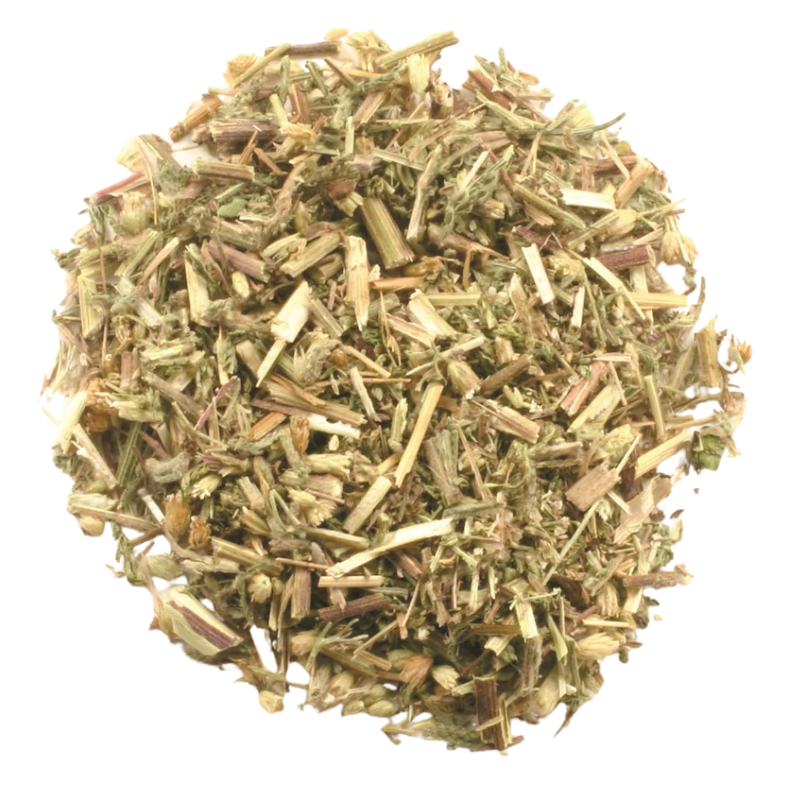Yarrow Herb Cut Dried - Herbal Collection
Yarrow Herb Cut Dried - Herbal Collection - 100 g is backordered and will ship as soon as it is back in stock.
Description
Description
Yarrow Herb Cut Dried is made from Achillea millefolium, a plant valued for its traditional uses in teas and herbal routines.
It contain unique plant compounds and antioxidants.
Yarrow is commonly used to support general wellness, soothe the throat, and for topical applications in craft and care.
Suitable for daily use in a balanced lifestyle
INFORMATION
Yarrow Herb Dried ; A Guide
Yarrow, scientifically known as Achillea millefolium, is a versatile herb with a long history of use in traditional medicine.
Known for its numerous health benefits, dried yarrow is a valuable addition to any herbal remedy collection.
Here is a detailed overview of its properties, uses, and safety considerations for your wellness website.
Botanical and Description
- Botanical Name: Achillea millefolium
- Family: Asteraceae
- Common Names: Milfoil, Bloodwort, Soldier's Woundwort
- Plant Description: Yarrow is a perennial herb that grows in meadows, roadsides, and sunny slopes. It features feathery leaves and clusters of white, pink, or pale purple flowers.
Nutritional and Chemical Composition
Yarrow contains a variety of compounds that contribute to its health benefits:
- Flavonoids: Plant-based chemicals that help improve digestion and may have antioxidant properties.
- Alkaloids: Known to relieve digestive complaints and may have anti-inflammatory effects.
- Sesquiterpene Lactones: Contribute to its anti-inflammatory and antimicrobial properties.
- Essential Oils: Contain monoterpenes and sesquiterpenes, which have been linked to various medicinal properties.
Properties
Yarrow is known for several therapeutic properties, including:
- Anti-inflammatory: Reduces inflammation in the body and may help treat skin infections and signs of skin aging.
- Antimicrobial: Helps fight infections and has antiseptic properties.
- Antioxidant: Protects cells from damage by free radicals.
- Diaphoretic: Promotes sweating, which can help reduce fever.
- Digestive Aid: Helps alleviate digestive issues such as ulcers, IBS, and general gastrointestinal discomfort.
- Wound Healing: Known for its ability to stop bleeding and promote wound healing.
Sedative: May help relieve anxiety and insomnia.
Uses and Applications
- Internal Use:
- Tea: Yarrow tea can be made by steeping dried leaves and flowers in boiling water. It is used to improve digestion, reduce inflammation, and alleviate symptoms of colds and flu.
- Tincture: Yarrow tincture can be used for its sedative and digestive properties.
- External Use:
- Poultice: Fresh or dried yarrow can be applied to wounds to stop bleeding and promote healing.
- Salve: Used to treat eczema and other skin conditions.
- Spray: A mixture of yarrow tincture and water can be used to deter mosquitoes and soothe bug bites.
Conclusion
Dried yarrow is a potent herbal remedy with a wide range of applications for digestive health, wound healing, and inflammation.
Always consult with a healthcare provider before incorporating yarrow into your herbal regimen, especially if you have underlying health conditions or are pregnant or breastfeeding.
CAUTION
- Pregnancy and Breastfeeding: Yarrow is likely unsafe during pregnancy as it may affect the menstrual cycle and cause miscarriage. There is insufficient information on its safety during breastfeeding.
- Allergies: People allergic to ragweed and related plants (Asteraceae family) should avoid yarrow due to potential allergic reactions.
- Bleeding Disorders: Yarrow may increase the risk of bleeding and should be avoided by individuals with bleeding disorders or those taking blood thinners.
- Surgery: Avoid using yarrow two weeks before and after surgery due to an increased risk of bleeding.
For More Information please check our General Safety Herbal products Page

Yarrow Herb Cut Dried - Herbal Collection - 100 g is backordered and will ship as soon as it is back in stock.




